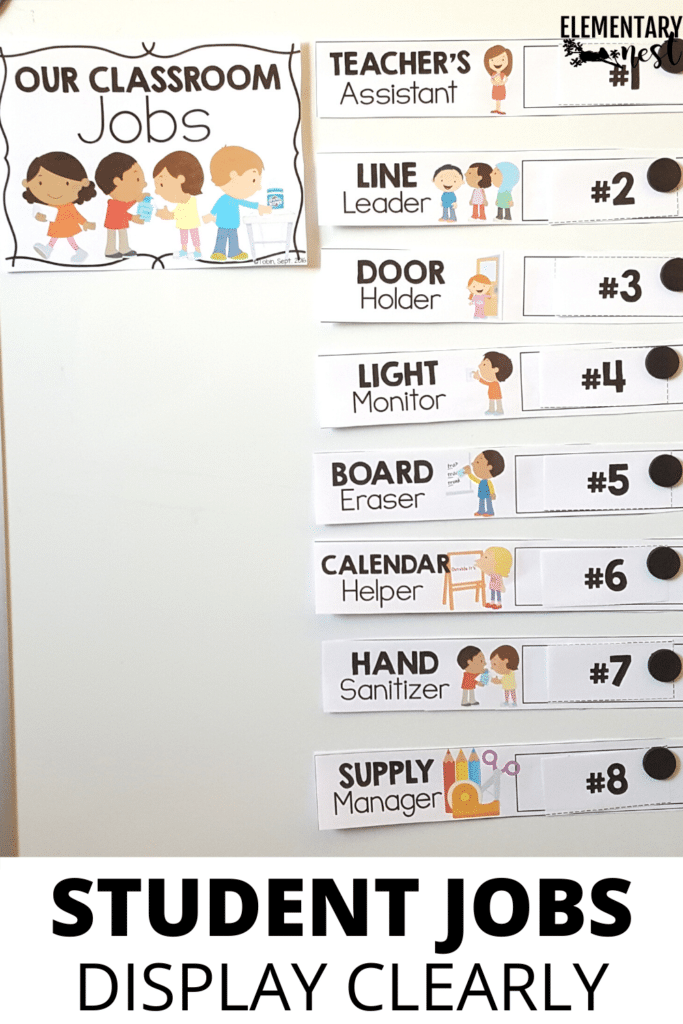
Introduction
Creating a classroom jobs display in an elementary school setting is a fantastic way to promote responsibility and teamwork among students. Assigning specific tasks to students not only helps them develop important life skills but also fosters a sense of ownership and pride in their classroom. With a well-organized and visually appealing display, students will be excited to take on their roles and contribute to the smooth running of the classroom.
Benefits of Classroom Jobs
Having a classroom jobs system offers numerous benefits for both students and teachers. Firstly, it teaches students about responsibility and accountability. By assigning tasks, students learn to complete their duties on time and develop a sense of commitment towards their responsibilities.

Secondly, classroom jobs encourage teamwork and collaboration. Students work together to ensure that all tasks are completed efficiently, fostering a supportive classroom environment. Additionally, it helps students develop essential skills such as leadership, organization, and time management.
Creating a Classroom Jobs Display
A visually appealing classroom jobs display can engage students and make the process more exciting. Here are some tips to create an effective display:

1. Choose a Theme: Select a theme for your display that aligns with your classroom decor or curriculum. It could be a colorful bulletin board, a magnetic board, or a pocket chart.
2. Assign Job Cards: Create job cards for each task and laminate them for durability. Use clear, bold fonts and include both the job title and a visual representation of the task.
3. Display Job Cards: Arrange the job cards on your chosen display board, ensuring they are easily accessible for students. Consider assigning a specific area for each job to maintain organization.
4. Rotating Jobs: Decide whether you want to rotate jobs daily, weekly, or monthly. Clearly indicate the duration of each job on the display to avoid confusion.
Examples of Classroom Jobs
There are various classroom jobs that can be assigned to students. Here are some examples:

1. Line Leader: The line leader leads the class during transitions and ensures that everyone follows the rules.
2. Door Holder: Responsible for holding the door open for classmates when entering or leaving the classroom.
3. Librarian: In charge of organizing and maintaining the classroom library.
4. Paper Collector: Collects completed assignments and distributes new ones.
5. Materials Manager: Ensures that all necessary supplies are readily available for class activities.
Benefits of Classroom Jobs Display
A well-designed classroom jobs display offers several benefits:

1. Visual Reminder: The display serves as a visual reminder for students about their assigned tasks, reducing the need for constant reminders from the teacher.
2. Student Empowerment: It empowers students by giving them a sense of control and ownership over their classroom environment.
3. Classroom Management: With designated roles, students become more engaged and focused, leading to better overall classroom management.
4. Parent Involvement: A classroom jobs display allows parents to see what tasks their child is responsible for and encourages discussion about responsibility at home.
Conclusion
Implementing a classroom jobs system and creating an engaging display is an effective way to promote responsibility, teamwork, and essential life skills among elementary school students. By assigning specific tasks and providing visual cues, students become active participants in maintaining a well-functioning classroom environment.